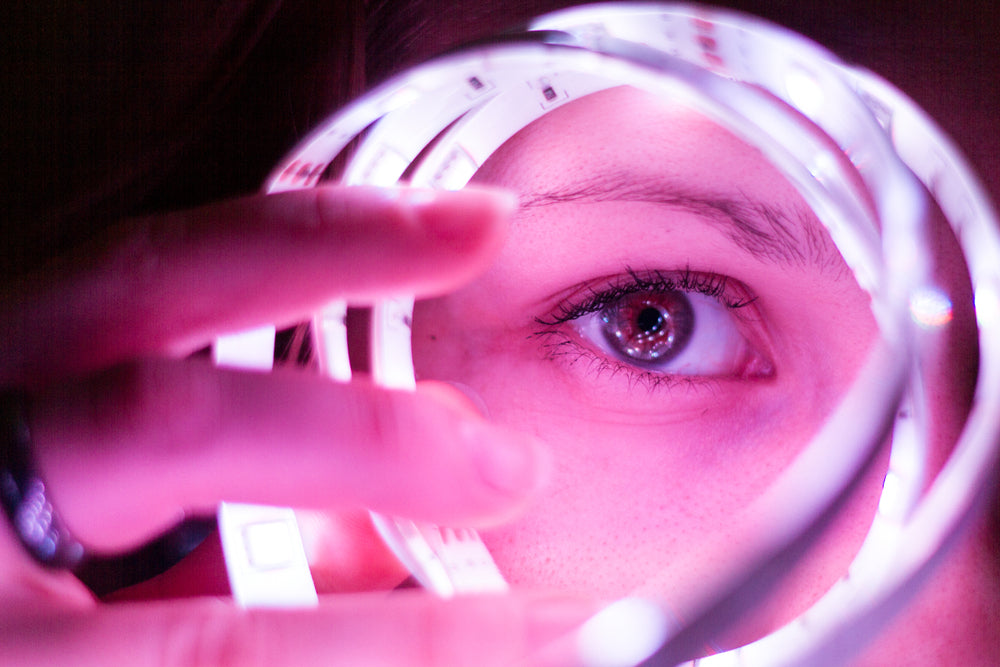Cracking the LED Code: Understanding the Spectrum Modulation Puzzle

The light color produced by LEDs varies based on the semiconductor component used to make the chips. The most common chips utilize indium gallium nitride (InGaN) to produce blue LEDs and gallium-aluminum-arsenide-phosphide (GaAlAsP) to create orange, yellow, and green LEDs.
The visible spectrum is comprised of the broader spectrum, in the case of phosphors, produce. The higher the CRI it den chieu cay is more accurate the color of objects is represented.
Light Emitting Diode technology
The diodes emitting light comprise a semiconductor that permits current flow only in one direction. They’re highly efficient in converting electricity into visible light.
The atoms of the p-type material absorb electrons from the types n. These electrons then get deposited in the holes of the P type material.
The p-n junction inside the p-n junction of an LED is heavily doped with particular semiconductors to create lighting with various spectral wavelengths. This is why LEDs get their characteristic color, and it’s what sets them apart from other lighting sources such as lasers. The LED’s body is made of epoxy and functions as a lens, condensing on the radiation emitted from the junction p-n into a single spot of light on its highest.
Color Temperature
Kelvin is the standard measurement used for LED color temperatures. Different colors produce distinct shades of white. The temperature of the color of a lighting fixture is a major factor to the mood created by the light.
Warm LED lights (2700K-3000K) are similar in shade to the incandescent bulb and work best in areas of residence or when you want a relaxing atmosphere. Cool LED lighting (3000K-4900K) create an intense white or yellowish color and are perfect for bathrooms, kitchens and workspaces. The daylight (up to the 5000K) lighting produces a blueish white colour that’s typically used for commercial purposes.
Since it has an oblong design The LED’s output spectral will differ from that of incandescent light that is shown earlier. This is because of the structure of p-n transistors. The emission peak shifts as the current operating.
Color Rendering Index (CRI)
The CRI is the ability of a source of light to accurately render hues. It is crucial to have a high CRI because this allows the viewer to view things in their real colors.
Traditional CRI measurement involves comparing the light source to the sun or an illumination device that has a 100 percent rating. The ColorChecker is an instrument that can be used to measure hues.
In the search for LEDs it is recommended to choose LEDs with a CRI above 90. This can be a good choice in applications that require accurate colour rendition such as galleries, shops as well as jewelry display. High CRI can also make the lighting more high-quality in the home and may help in creating an environment that is more relaxing.
Full Spectrum as opposed to. Narrow Spectrum
The majority of LED lights are advertised as full spectrum. However, their intensity of the spectral spectrum varies from lights to sources. For some LEDs, for instance, make use of various phosphors which create different hues and wavelengths. When combined together they generate white lights. This could result in a high CRI of over 80. This is usually known as a broad spectrum light.
A few LEDs employ only one type of phosphor for the entire die. They’re typically monochromatic and do not meet the needs for transmission-fluorescence microscopy. The narrow spectrum LEDs tend to give way to the canopy the plant and ignore lower leaves which can be difficult for some species such as those of the Cranefly Orchid (Tipularia discolor). The LEDs with narrow spectrums are also lacking light wavelengths necessary for photosynthesis. This results in poor growth.
Apps
The main challenges that are faced during the process of making LEDs are maximization of light production within material and effective transfer of that light to the external environment. Some of the light produced inside the semiconductor’s surface may be released due to the total internal reflection phenomenon.
With the help of adjusting the energy band gap of the semiconductor utilized in their manufacture, the emission spectrum of LEDs of various types can be modified. Most diodes make use of the groups III of the periodic table and V including gallium nitride SiC, ZnSe, or GaAlAsP (gallium aluminum arsenic phosphide), to produce the required wavelength bands.
Many fluorescent microscopy applications require LEDs of high power and narrow spectrum emission bands to ensure efficient excitation of fluorophores. Modular LED modules are utilized in LED lamps of today to control the wavelengths for each project.



